Peru has been one of the top gastronomical destinations around the world, thanks to its signature dishes such as Peruvian ceviche and cuy (guinea pig).
The diverse geographical properties of Peru have allowed the country to source some of the finest and most unique ingredients for preparing food. But what about their drinks? Are there any good Peruvian drinks?
Well, the answer is a definite yes! From the alcoholic cocktails such as Pisco Sour and Chilcano to the more culturally significant drinks such as Mate de Coca (Coca Tea) and Chicha Morada, there are plenty of unique and traditional drinks in Peru.
After traveling Peru for a few months, here are 11 of the best Peruvian drinks we tried! Pair one of these beverages with your Peruvian dishes to create the perfect meal!
Alcoholic Peruvian Drinks
Pisco Sour
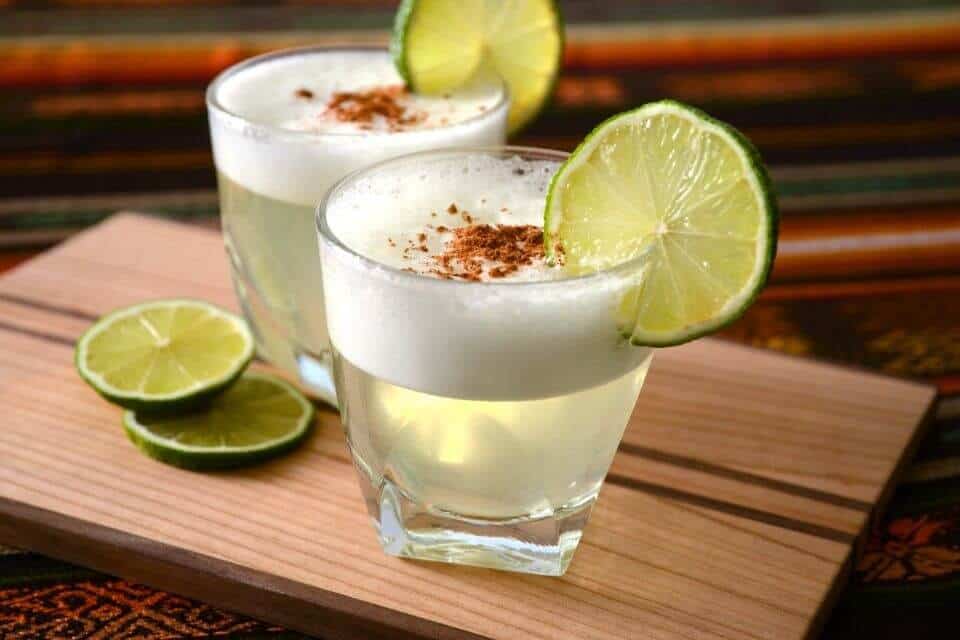
There is simply no alcoholic drink more famous in Peru than the Pisco Sour, the national drink of Peru. The drink’s main ingredient is Pisco, a colorless to yellowish grape-distilled spirit that is produced in the winemaking regions of Peru and Chile. Some people also refer to Pisco as Peruvian brandy.
Pisco Sour is made by combining Pisco with freshly squeezed lime juice, simple syrup, ice, raw egg white, and Angostura bitters. Perhaps the most iconic feature of the Pisco Sour is the use of raw egg white in its making. Pisco Sour is shaken before the ice is added, which creates a thick foamy surface thanks to the raw egg whites.
When we first heard about it on our Peru trip, we were honestly disgusted by it. Who in the right mind would put raw egg white in their cocktail? Gross!
Nowadays, it has become one of our favorite alcoholic drinks in the world, just slightly behind the Brazilian caipirinhas.
The most important ingredient of this Peruvian drink is the Angostura Bitters. The bitters are typically used as a garnish, but it also adds color and a unique fragrance to this cocktail. Though small, it is a powerful ingredient in making the Pisco sour balanced.
If there is a Peruvian cocktail to try, it is the Pisco Sour!
Fun Fact: There is a dispute about which country is the origin of Pisco. Both Peru and Chile say that Pisco originated in their country. It is the reason why you’ll never find the term Peruvian Pisco or Chilean Pisco. It is just Pisco.
Chilcano
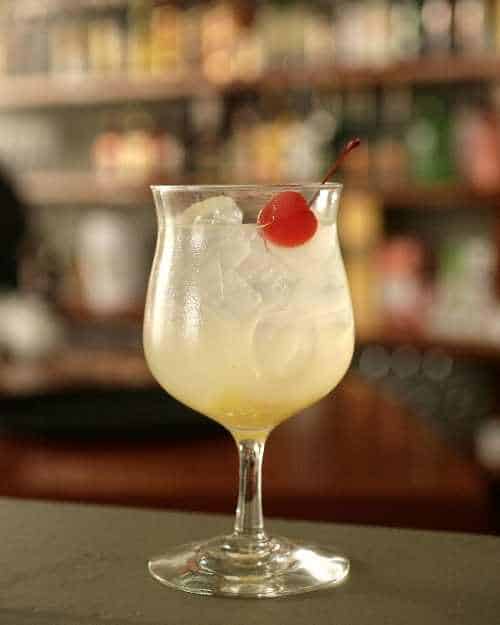
The Chilcano is another popular Peruvian cocktail, especially on a hot summer day. Similar to its brother, the Pisco Sour, Chilcano is made using Pisco as the base liquor. However, there are many key differences between the two.
For starter, the Chilcano doesn’t use egg whites as one of its ingredients, which means you won’t see the unnerving white foam at the top of your drink. This is great for foreigners who are looking for something a little more … foreigner-friendly. The texture is much more like a drink.
The other difference is that the Chilcano mixes Pisco with ginger ale (along with lime juice and Angostura Bitters). This means the Chilcano is much sweeter and appeals to a wider cocktail-drinking audience, especially the ones that aren’t used to drinking spirits such as Pisco.
Lastly, the drink is garnished with a lime twist.
The Chilcano is much more popular because all of the ingredients can be mixed, unlike the Pisco Sour which needs to be shaken. This is the drink you’re more likely going to find in local restaurants, bars, and house parties.
Chicha de Jora
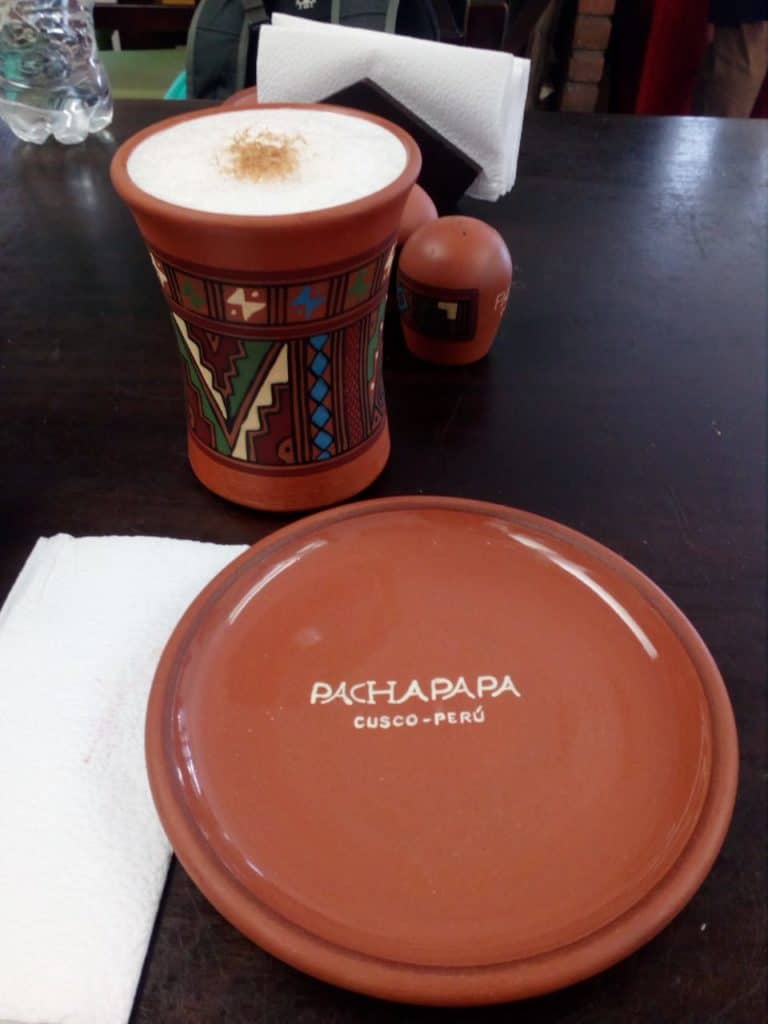
Chicha de Jora, or more commonly known as corn beer in English, is a traditional alcoholic Peruvian drink made from fermented yellow corn. Evidence shows that the Incas had mills in Machu Picchu and other ruins that were used exclusively to produce Chicha Jora.
Historically, this traditional Peruvian beverage was consumed during religious festivals in huge quantities. Yes, the Incas probably had some crazy parties!
Chicha de Jora is made by germinating corn, extracting the sugars, boiling the wort, and then fermenting in large earthenware for days. The result is a drink with a yellow and murky appearance. It is definitely not the most appealing Peruvian drink.
But if there is one thing I learned about drinks in Peru, it is how much their looks could deceive. Chicha de Jora is delicious, refreshing, and really affordable. Its taste is mostly sweet with a hint of acidity and sourness, making it similar to apple cider.
Typically, Chicha de Jora has about a 1-3% ABV (alcohol by volume), which locals often allow kids to drink.
But since the art of making Chicha de Jora is a skill passed down by Incas generations after generations, there are slight variations in terms of taste and ABV. If you let the wort ferment for longer, it can reach a much higher ABV!
Chicha de Jora is not a popular drink because making it is a skill that only a few descendants of the Incas have. You can find it in restaurants, especially in Cusco and Arequipa, but the drink is still mostly consumed during Peruvian festivals such as Inti Raymi, the sun festival.
We only saw it a handful of times during our months-long trip in Peru!
Chicha de Frutilla
Chicha de Frutilla is a sweeter version of Chicha Jora. Sometimes referred to as Frutillada, this drink is a mix of corn beer (Chicha de Jora) and strawberries, one of the biggest produce in Peru. Sugar is added to the mix to create a more appealing drink.
This drink is pink and even harder to find than Chicha de Jora. We only saw it a few times in the markets. There are “Chicherias”, aka chicha specialty shops throughout the country where you can find Frutillada, but those are becoming rarer and rarer these days.
Traditional Peruvian restaurants known as picanterias are more likely to have them, but most of them are situated in Arequipa, a city known for traditional Peruvian foods.
Chicha de Frutilla is typically served in a huge glass that requires two hands to hold! We recommend sharing it with someone because it is an alcoholic drink after all!
Peruvian Beers
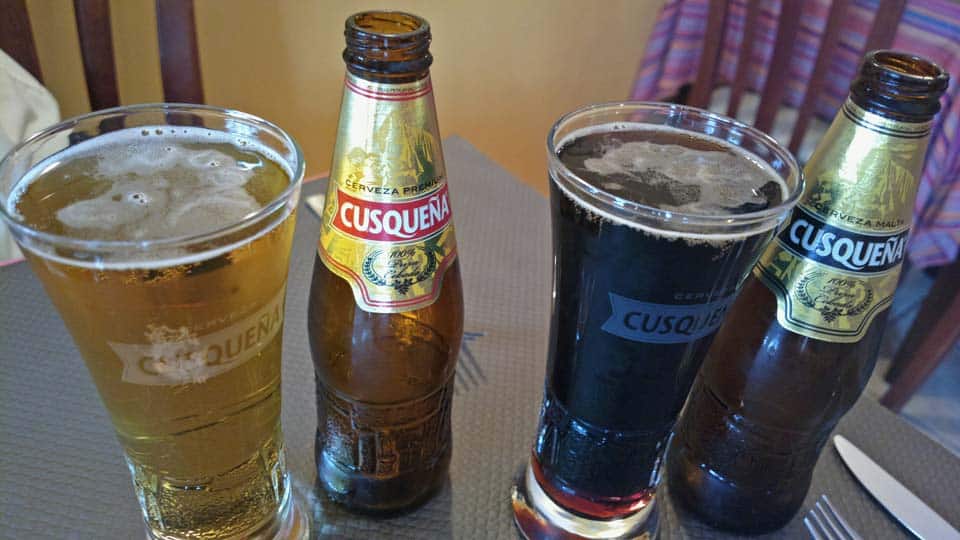
Beer is a popular beverage everywhere in the world and Peru is no exception. Though there are numerous types of beer in Peru, the most common ones are:
- Pilsen Callao
- Cristal
- Cusqueña
I’ve personally tried all three and all of them are quite disappointing except for Cusqueña. When I asked local Peruvians to recommend me a beer, most of them said Cusqueña. It is one of the better beer brands in Peru.
Pilsen Callao is very tasteless and reminds me of the cheap BudLights I had in university. I would avoid it at all costs if you are looking for a decent-tasting beer. But if you want something cheap to drink at a club or bar, then it’s not bad.
Cristal is an American-style lager that has been brewing in Peru since 1921. It is Peru’s number 1 selling beer in Peru. When it comes to taste, it certainly is a bit better than Pilsen Callao, but it is still almost like you are drinking water.
That is why when we were in Peru, we mostly drank Cusqueña beer, a brand that makes their beer in the historic city of Cusco. The brand has many different types of beer, such as:
- Dorada
- Roja
- Trigo
- Negra
Cusqueña Dorada is a regular red lager and the most common of the four types of beer. However, our favorite has to be Cusqueña Nega. It’s a black lager with a very distinctive taste.
Craft beers are also becoming increasingly popular in Peru. In cities like Lima and Cusco, you can find lots of restaurants and bars serving artisanal beer.
Non-Alcoholic Peruvian Drinks
Mate de Coca
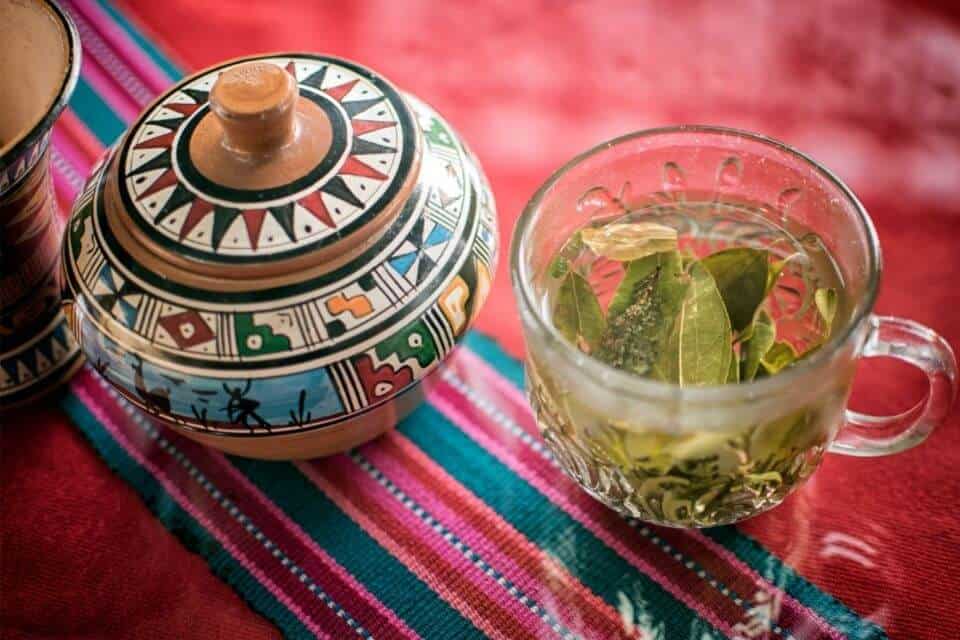
Perhaps the most popular non-alcoholic drink in Peru is Mate de Coca, a drink that has been passed on by the Incas. Mate de Coca translates to Coca Tea in English, and it is made by soaking coca leaves in boiling water. The taste is similar to green tea, but a little bit more bitter and earthy.
Historically, coca leaves are sacred and only the Inca royalty could have access to them. Now they are widely available and you can get a huge bag of them for less than a dollar at the nearest Peruvian market. The leaves can be chewed or soaked in water to create mate de coca.
Whichever way you decide to consume the coca leaves, they are an absolute essential when hiking in Peru. The natural properties of the coca leave help with altitude sickness, something that is quite common in the higher elevation regions of Peru.
You can also find them in tea bags, but to be honest, they are more difficult than finding the leaves themselves. Coca tea bags are mostly for tourists.
This ancient Inca drink is one of the most unique Peruvian drinks, but be careful of failing drug tests after ingesting a large quantity of it!
Chicha Morada
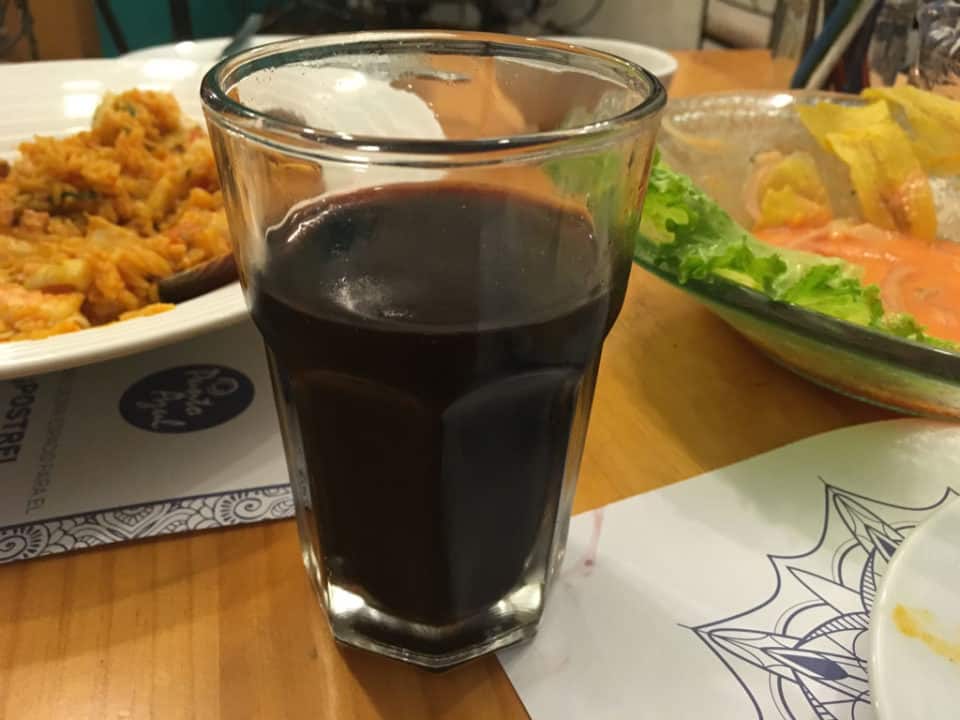
There is no drink in Peru more popular than the Chicha Morada, a historical drink that was widely consumed even before the Incas. Unlike mate de coca, Chicha Morada has no medicinal uses. Locals drink it purely for the taste.
Chicha Morada is a drink made from purple corn, one of the 55 species of corn grown in Peru.
The purple corn is harvested along the Andes Mountains of Peru, but the drink is consumed on a nationwide level. Unlike Chicha de Jora where the fermented corn creates alcoholic content, chicha morada is alcohol-free.
The process to create chicha morada is a method that has been passed down from generation to generation. Traditionally, the purple corn is boiled with water along with pineapple peels, quince, cloves and cinnamon. After the mixture is strained and cooled, sugar is added to it.
Nowadays, Chicha Morada has been so popular that you can buy it in a packet and just add some water to it. When we were in Peru, this might be the version of chicha we had, because every restaurant’s chicha tasted the same.
Inca Kola
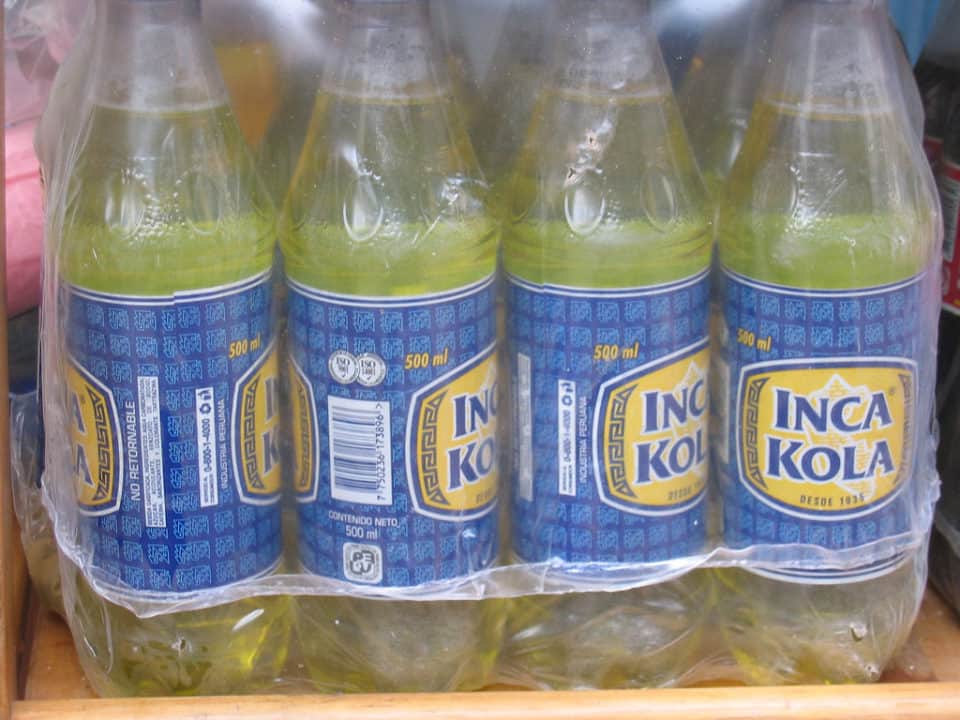
If you are in the mood for a sweet and refreshing soft drink on your trip to Peru, then you must try Inca Kola, a bright yellow fluorescent soda that kind of tastes like lemon verbana, a plant native to South America.
However, most travelers say it tastes like bubblegum or cream soda.
This Peruvian soft drink dominates the soda industry in Peru, beating out popular worldwide brands such as Coca Cola and Pepsi.
I know what you are thinking. The Incas had soft drinks? No!
The name Inca Kola is solely for branding. The drink was actually created in 1935 by a British immigrant called Joseph Robinson Lindley.
In a way, the Inca Kola is a national treasure of Peru. It is Peruvians’ pride and a symbol of Peru! Make sure you get your hands on some!
Emoliente
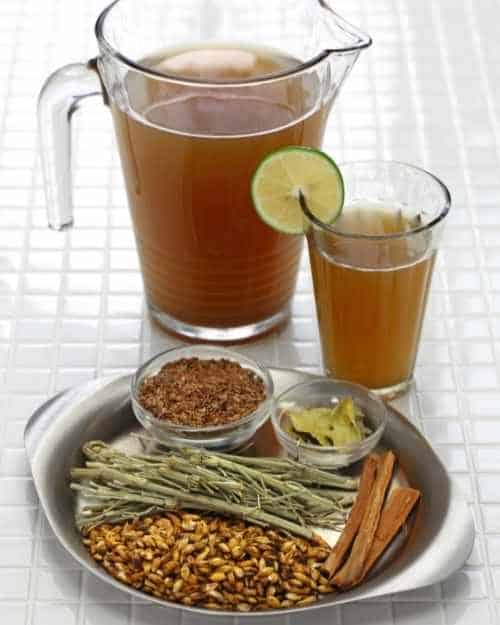
Emoliente is a herbal tea that has been popular since colonial times. Commonly consumed in the morning or afternoon, the tea has herbal ingredients that help with a variety of problems, such as respiratory, circular, digestive and reproductive.
It is usually served hot but it can be quite nice consumed chilled on a hot summer’s day!
Emoliente was once one of the most popular drinks in Peru and you could find a street vendor on nearly every corner of Lima. Nowadays, this drink is a little bit harder to find.
The core ingredients of the Emoliente are roasted grains of barley, medicinal herbal extracts sugar and lemon juice. The most popular herbs used are Andean horsetail, flax, alfalfa sprouts, and more.
The herbal ingredients part of the recipe can change depending on what health problems you are trying to target.
Jugo Especial
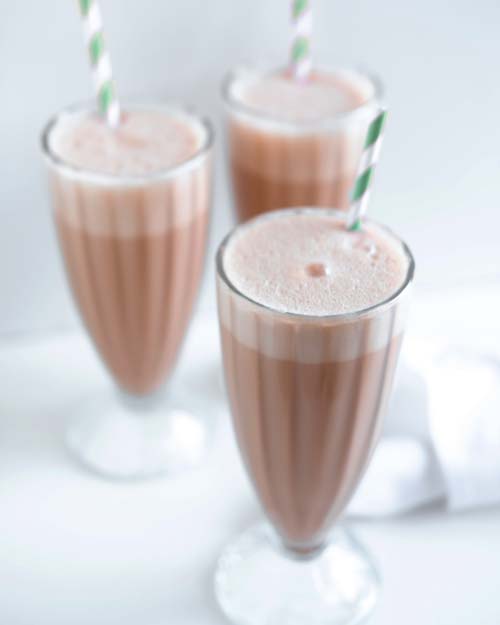
For those that speak a little bit of Spanish, you might know that Jugo Especial translates to Special Juice in English. So what makes this juice so special?
There are two ingredients that make this juice so unique – raw egg and a shot of Cusqueña beer. Yeah, that’s not a typo – raw egg (and beer).
The craziest part is that Jugo Especial is typically had as a breakfast beverage. What a way to start your morning, eh?
Other typical ingredients include banana, papaya, pineapple, beetroot, passionfruit, strawberries and algarrobina (syrup from the Black Carob tree). The syrup is the glue that ties it all together to make this Peruvian drink somewhat tolerable. Of course, you can mix other fruits to create your own juice.
There is also a more “friendly” version of the Jugo Espeicla, and that is Jugo Surtido, which translates to assorted juice in English. This version of fruit juice does not include raw egg or a shot of beer!
Peruvian fruit juices are something you cannot miss, just mentally prepare yourself beforehand!
Limonada Peruana
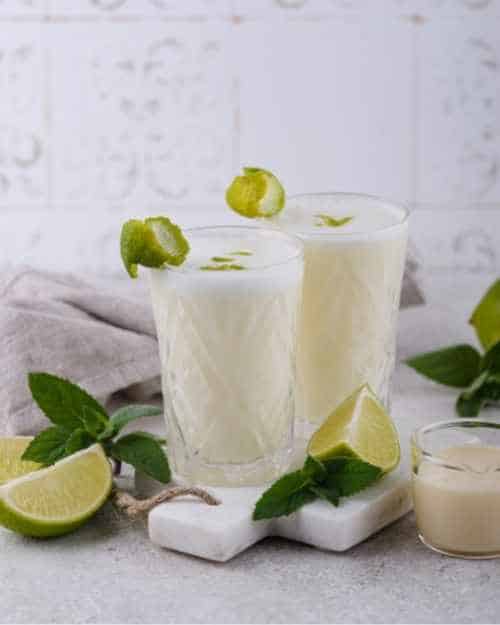
At the end of our list of traditional Peruvian drinks, we have something a little more tame, the Peruvian lemonade or Limonada Peruana.
The Peruvian lemonade or more accurately, the Peruvian limeade, is made with Peruvian limes. The limes in Peru are truly special in terms of taste. They are tart but not as bitter as other types of limes such as Persian limes or key limes.
Peruvian limes are used commonly in their cuisine, and it is one of the reasons why the flavors are so impactful. Peruvian lemonades are no exception.
This refreshing drink is typically served during lunch, and is made exactly how you make lemonade. Squeeze some limes into boiled water, add some sugar, toss the mixture into the blend, and voila! You can add some ice for the hot Peruvian summer days.
Simple and delicious, this non-alcoholic Peruvian drink is definitely worth a try!
Peruvian Drinks FAQs
What did the Incas drink?
What is a popular drink in Peru?
There are plenty of incredible and unique drinks in Peru. Next time you head to Peru, make sure you give some of them a try! They are surely going to change your experience in this foreign and exotic country!
Disclaimer: Some of the links above are affiliate links. That means if you book or make a purchase through the links, we will earn a small commission at no extra cost to you! The money will help run this site! Thank you!
